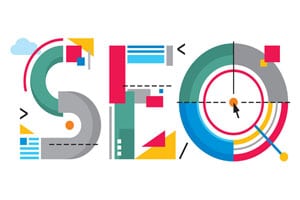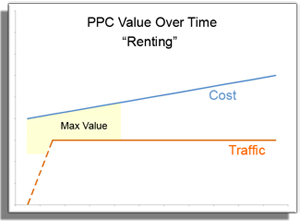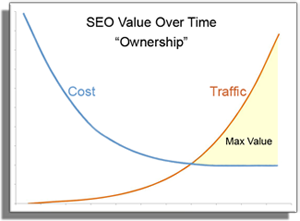If a tree falls in a forest, and no one hears it, does it still make a sound?
Why are you hearing such clichés in an SEO blog post…because the implication of the adage is actually quite relevant.
If no one hears the sound, then it may not exist at all. As brilliant as the fall may have been, as many animals as it may have taken down beneath its mighty trunk, no one may ever know its story. So how exactly is this relevant to SEO? Well, imagine your company’s website and blog page – they sit silent, with little to no traffic, yet they are designed with expertise and the content is practical and intriguing. If you don’t use SEO, then no one will ever be able to appreciate the usefulness of them, let alone the effort that was put into creating them.
Search engines really don’t have an easy way to discover and direct people to your content without your help and the help of others. Although some of us would love to type in Google.com and see results for everything that we were planning to search for before we even typed it in – that’s just not a luxury in our generation. Unfortunately, it takes other humans to run the query, dig through 1,000’s of search results, and come across your page – all just to get a view. It takes those same people to also provide a reaction and give comments and then link the page for their friends, just to get a few more views. It only makes sense then that useful and superior content must be marketed, and not just created and left to be found deep within the crevices of our favorite search engine databases.
Trust this: your content isn’t being paid any mind hanging out on the 10th page of the search results. In fact, 50% of users will click on the top two results on the first page. It’s also reported that 60% of total clicks go to the top three results, and 62% of clicks are dedicated to the first page results. Therefore, only 2% of clicks truly go to anything besides the top three results on the first page. Additionally, only 23% of searches will actually progress to the second page. That’s 85% of clicks allocated to the first two pages of search results. Where’s the last 15% go? I’d argue, confidently, that the remaining percentage of clicks are scattered between the first three pages of results, and no further. If you haven’t got the hint – get your business page on the first page of results for keywords that apply to it. It’s absolutely necessary if you’re ever planning on expanding your local reach through online marketing; otherwise, you may as well be holding off on online investments until you can figure out a way to increase your rankings.
What about Pay Per Click advertising though? Isn’t that what all those businesses who lack rankings use in order to appear in those fields above the actual search results? Sure, PPC is a great way to get your site noticed when users search keywords that you typically don’t appear for, or want more traffic from, but it has its flaws. Economically, PPC makes no sense without some sort of SEO support. First off, PPC can be quite expensive, especially if you’re website’s content is hard for Google to recognize as relevant to the keywords you are buying. Essentially, this means that the more SEO work you do, the less you’ll actually have to bid (pay per click) in order to appear in the top rankings for paid advertising.
If this seems like minor obstacle to you and you’re still alright with not investing in SEO, but instead investing everything into PPC ads, let me break it down a bit more with some graphs so you can see the situation from a more economic perspective.
The graph above represents the cost of PPC advertising compared to the amount of traffic you receive by paying for it. Initially, the investment is extremely useful for capturing traffic that wouldn’t normally find a link to your website; however, over time, as you pay more and more to stay in those paid rankings, the amount of potential traffic for your ads really doesn’t fluctuate. Now let’s look at a graph with the same variables, but one that applies to SEO’s value instead.
In this graph you see that the average cost of SEO diminishes over time. This is because the fixed costs of SEO are quite expensive, whether finding a partner to do the work for you, or spending the time yourself, the first steps of SEO are quite time consuming and require a lot of detailed work. After you’ve tweaked all your site’s content to be keyword rich, and went through your html to list descriptions and do alt-tagging, you’ll most likely be creating local online listings through Google, Bing, Yahoo, etc. Eventually, once you’ve touched on everything possible and went around link building for long enough, there won’t be much “cost” to you besides maybe keeping a weekly update of your site’s blog that touches on keyword rich topics. As you can see though, the traffic you receive only becomes more and more as your search rankings increase. The graph is slightly flawed in that “traffic” would probably be more of an S-shaped curve because if you ever got your website to be the #1 search result for all your possible keywords then traffic would only increase exponentially if a significant amount of new people were using the internet for searches. Basically, the curve would peak out towards the top, but regardless the general idea of the graph stands, which is that SEO is only going to become less costly over time while your traffic keeps increasing, as opposed to PPC advertising – which only gets more expensive while traffic stays stable.
Hopefully that helps explain why SEO has a better return on investment than PPC ads over the long run. The combination of the two online marketing tactics is really something else completely though. If you’ve invested enough into good SEO work, you can really rake in the traffic with some solid PPC ads. Remember though, more often than not, PPC is only going to hurt your overall ROI without some quality SEO backing it.


